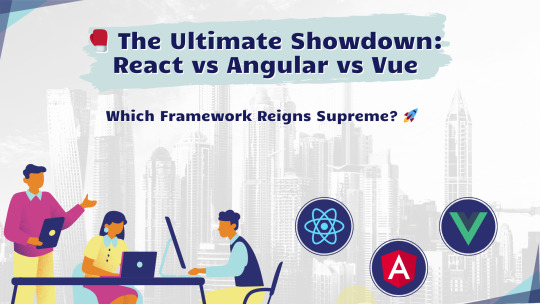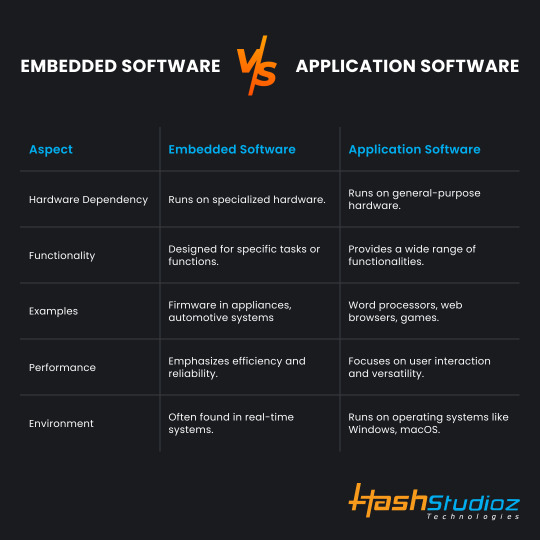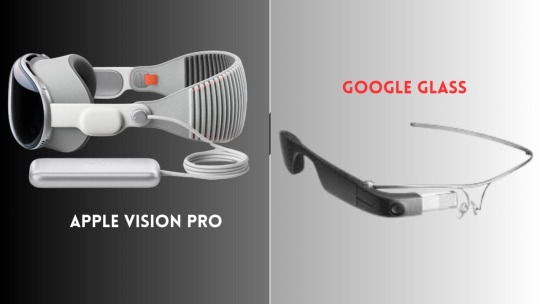#TechDebate
Explore tagged Tumblr posts
Text
Why Lawmakers Are Urging Action on Chinese Agricultural Drones
US lawmakers are calling for stricter regulations on Chinese agricultural drones to mitigate national security risks. As farming technology evolves, should security or innovation take precedence? Let’s dive into the potential risks and solutions.
The rise of Chinese agricultural drones in the US has sparked debates around national security, data privacy, and environmental impacts. Lawmakers are pushing for new regulations and domestic manufacturing incentives to ensure US farmers are protected and innovation continues.
What do you think about the use of Chinese drones in US agriculture?
Store link: https://samliglobal.en.alibaba.com/
Zhongshan Samli Drones Co. Ltd

CONTACT US
WhatsApp: +86 152 1870 3002
We chat: Samli 2022
mail address: [email protected]
#AgriculturalDrones#NationalSecurity#DroneTechnology#CyberSecurity#SustainableFarming#TechPolicy#Innovation#USAgriculture#DroneRegulations#TechInnovation#FarmTech#Farmers#AgriculturePolicy#DataPrivacy#SecurityConcerns#USFarmers#DroneSafety#FarmInnovation#Geopolitics#TechDebate#CyberProtection#DomesticManufacturing#EnvironmentalConcerns#GlobalTrade#SmartFarming#TechSecurity#FarmingTechnology
0 notes
Text
The AI race : US vs China
Lately, I’ve been feeling both fascinated and uneasy about the developments in artificial intelligence, particularly regarding China’s advancements. It's hard not to notice how quickly China has caught up, and even surpassed, the US in creating powerful large language models (LLMs). These models are not only of high quality, but they’re also cheaper and smaller in size, often open source. How did they manage to do this so fast?
I can't help but wonder—how did China make such strides in such a short amount of time? Are they simply more innovative and resourceful, or is there something else going on? The speed of development is mind-blowing, and it makes me wonder if they're somehow getting access to data from the US and the companies behind the big LLM models. Is this a case of intellectual property theft, or even worse, are they stealing data in ways that we aren’t aware of?
There's a growing sense of anxiety surrounding China’s AI boom. It feels like the technology is advancing so rapidly that it's almost impossible to keep up, and there's a looming feeling of surveillance and espionage. I find myself questioning if they’re spying on us, tapping into our data or creating models that have hidden agendas. Is this just speculation on my part, or are these legitimate concerns?
I’m not sure, but the speed at which they’ve been able to develop these LLMs is certainly unsettling. It feels like a race where we’re being outpaced, and it’s hard not to feel a sense of uncertainty about what’s coming next.
#AI#ArtificialIntelligence#China#US#Technology#LLMs#AIFuture#DataPrivacy#AIConcerns#AIAdvancement#TechEthics#AIandSurveillance#OpenSourceAI#AIInnovation#DigitalEspionage#TechDebate#FutureOfAI#ChinaAI#USvsChina#TechNews
0 notes
Text







Chat GPT VS Deep Seek
🔥 ChatGPT: The master of conversation & creativity ⚡ DeepSeek: The logic-driven challenger
Which AI do YOU trust more? Let us know in the comments! ⬇️👇
#AIShowdown#ChatGPTvsDeepSeek#BattleOfAIs#FutureTech#ArtificialIntelligence#TechDebate#MachineLearning#innovation
0 notes
Text
The Growing Presence of In-App Advertising
How do you feel about the increasing number of ads within apps and services like Inoreader? Are they a necessary evil to support free content, or do they harm the user experience? What’s been your strategy for dealing with them? Share your thoughts below!
#inappads#mobileadvertising#freemiummodel#userexperience#digitalmarketing#adstrategy#techdebate#appmonetization
0 notes
Text
Artificial Intelligence: A tool of limitless potential or a challenge to humanity? Explore the pros and cons of AI in 'Artificial Intelligence Pros and Cons: The Enigma of AI' and discover how it's reshaping our world. Is it a revolution or a risk? Let's dive into the enigma of our future!
0 notes
Video
youtube
Mac Virtual Display - Apple Vision Pro vs Dual Screens? 🍏 💻 📺 https://applevideos.co.uk/mac-studio/mac-virtual-display-apple-vision-pro-vs-dual-screens
0 notes
Text
#CodingVsProgramming#TechDebate#SoftwareDevelopment#CodeWarriors#ProgrammingLanguages#TechTalks#CodingCommunity#CodeVsLogic#TechComparison#DeveloperDilemma
0 notes
Text
🥊 The Ultimate Showdown: React vs. Angular vs. Vue - Which Framework Reigns Supreme? 🚀

In the ever-evolving landscape of web development, choosing the right framework can make or break your project. Among the numerous options available, three stand out as the titans of the industry: React, Angular, and Vue. Each has its strengths, weaknesses, and unique features that cater to different developmental needs. But which one is the best for your next project? Let’s dive into the ultimate showdown! 🥊
⚛️ React: The Powerhouse of Flexibility
Created by: Facebook Released in: 2013 Core Philosophy: Component-Based Architecture
Pros:
Reusable Components: React’s component-based structure promotes reusability, making your code more maintainable and scalable.
Virtual DOM: This enhances performance by updating only the parts of the DOM that have changed.
Rich Ecosystem: A vast ecosystem of libraries and tools that can be integrated seamlessly.
Cons:
Learning Curve: JSX, the syntax extension used in React, can be intimidating for beginners.
Boilerplate Code: Often requires a significant amount of setup and configuration.
Ideal For:
Single Page Applications (SPAs)
Complex and large-scale applications
Projects requiring high performance and scalability
🅰️ Angular: The All-In-One Solution
Created by: Google Released in: 2010 (AngularJS), 2016 (Angular) Core Philosophy: Complete Framework
Pros:
Two-Way Data Binding: Simplifies the synchronization between the model and the view.
Comprehensive: Offers a complete set of tools and features right out of the box, including a robust CLI, forms, HTTP client, and more.
Robust Community: With Google's backing, it boasts a robust community and first-rate assistance.
Cons:
Steep Learning Curve: Its complexity can be overwhelming for newcomers.
Performance: Can be slower compared to React and Vue, especially in larger applications.
Ideal For:
Enterprise-level applications
Applications with complex architecture
Developers who prefer a comprehensive, all-in-one framework
🌟 Vue: The Rising Star
Created by: Evan You Released in: 2014 Core Philosophy: Progressive Framework
Pros:
Ease of Use: Vue’s simple syntax and detailed documentation make it beginner-friendly.
Flexibility: Can be used for both single-page applications and more complex projects.
Reactive Two-Way Data Binding: Simplifies the development process.
Cons:
Smaller Ecosystem: Although growing, Vue’s ecosystem is not as extensive as React’s.
Corporate Support: Lacks the backing of a major corporation like Facebook or Google.
Ideal For:
Small to medium-sized projects
Developers looking for simplicity and ease of integration
Projects that require rapid development
🤔 Which One Should You Choose?
The choice between React, Angular, and Vue largely depends on your project requirements, team expertise, and personal preference.
React is perfect if you need flexibility and a strong ecosystem.
Angular is ideal for enterprise-level applications with complex requirements.
Vue is great for smaller projects or when you need to get up and running quickly with a gentle learning curve.
In conclusion, there is no one-size-fits-all answer. Evaluate your project needs, experiment with these frameworks, and choose the one that aligns best with your goals. Happy coding! 🚀
#ReactJS#AngularJS#VueJS#JavaScript#WebDevelopment#FrontendDevelopment#Frameworks#Coding#Programming#TechDebate#DeveloperCommunity#WebDesign#SoftwareEngineering#TechTrends#BattleOfFrameworks
0 notes
Text
Ultra-Thin iPhone 17
Share your thoughts!
0 notes
Text
#TechWars#SamsungVsApple#SmartphoneShowdown#TechReview#TechDebate#PhoneComparison#TechBlog#DigitalTrends#MustRead#TechInsights
0 notes
Text

#SoftwareDevelopment#EmbeddedSoftware#ApplicationSoftware#TechTalk#DeveloperCommunity#CodingLife#SoftwareEngineering#Programming#TechDebate
0 notes
Text

Native App vs Cross-Platform App Development – Explore the Distinctions
What is the distinction between native and cross-platform mobile apps? How many native and cross-platform mobile apps are there? What are the various technologies used to build native and cross-platform mobile apps? What is the popularity of individual modes of developing mobile apps? These and many more native app vs cross-platform app insightful facts are covered in the infographic presented below.
Native apps are the apps that you build specifically to leverage the capabilities of Android or iOS. Both the operating systems have their ecosystems with their line-up of features that may not be present in the other OS. Hence, if you want to leverage the OS-based features of, let’s say, iOS, you will have to build a native app for iOS.
The infographic lays down the pros and cons of both native and cross-platform mobile apps.
The primary stress of the infographic is that although there is a great demand for native apps, cross-platform apps certainly have their strong points.
With cross-platform mobile app development, you can cut costs by almost 30-40%. The time can be reduced to half, and 50–80% of the code can be reused by your developers.
For more such information : Click here
#NativeApp#CrossPlatform#AppDevelopment#MobileApps#TechnologyComparison#SoftwareDevelopment#MobileDevelopment#TechDebate#NativeVsCrossPlatform#MobileStrategy
0 notes
Text
👓 Apple Vision Pro vs Google Glass: The Future of Wearable Tech

💡 What sets Apple Vision Pro and Google Glass apart? 🚀 Explore the cutting-edge world of wearable technology in my latest Tumblr post! This in-depth analysis of Apple's Vision Pro and Google's Glass not only delves into their unique features and functions but also provides a forward-looking perspective on their potential impact on the tech landscape.
🔍 Ready to stay ahead of the curve in wearable tech? Click below to read the full post and join the conversation. 🔗 Read the full post and dive into the world of Apple Vision Pro and Google Glass. #WearableTech #TechComparison #ReadMore
#AppleVisionPro#GoogleGlass#WearableTechnology#TechComparison#FutureTech#TechnologyInnovation#WearableInnovations#TechDebate#TechTrends#DigitalInnovation
1 note
·
View note
Text
Decoding Apple’s Vision Pro: Navigating the Confusing Realm of “Spatial Computing”

The Enigma of Spatial Computing
Apple’s latest venture into augmented reality, the $3,500 Vision Pro ski goggles, has ignited a debate over terminology within the tech community. While Apple insists it’s not virtual reality but rather “spatial computing,” the lack of a clear definition for these terms has left many scratching their heads. The confusion is not limited to consumers; even industry experts find it challenging to pinpoint the precise meanings of terms like “mixed reality,” “augmented reality,” “holographic computing,” “the metaverse,” or “XR.”
Spatial Computing vs. XR: A Linguistic Quagmire
The term “spatial computing” has been thrown around, but its definition remains elusive. Some consider it synonymous with XR (extended reality), while others argue it aligns more with mixed reality or augmented reality. The lack of consensus on these terms contributes to a linguistic quagmire, making it difficult for consumers to understand the technology and its applications.
Unraveling the Vision Pro: Mostly VR with a Dash of Augmented Reality
Despite Apple’s insistence on “spatial computing,” experts lean towards defining the Vision Pro as primarily a virtual reality (VR) device. When wearing the Vision Pro, users can experience an immersive video feed of the physical world combined with internet elements. It allows for activities such as watching movies with a virtual overlay and accessing recipe apps with cooking timers superimposed on the real-world environment. However, the nuances of these terms add an extra layer of confusion for consumers trying to comprehend the technology they’re investing in.
Immersive 3D: A Common Ground?
To simplify the complex terminology, some propose embracing the concept of “immersive 3D” experiences. This umbrella term covers a range of technologies, including virtual reality and augmented reality, and envisions a future where digital interactions seamlessly blend with the physical world. Apple’s vision for unobtrusive glasses offering immersive experiences aligns with this concept, promising a future where technology bridges the gap between reality and digital augmentation.
As Apple navigates the intricate landscape of augmented reality, the industry grapples with terminology debates, leaving consumers in a state of confusion. While the Vision Pro may be a step towards a more immersive digital future, the ambiguity surrounding these terms emphasizes the need for clearer language in describing the evolving realm of spatial computing and its various iterations.
Curious to learn more? Explore our articles on Enterprise Wired
#spatialcomputing#augmentedreality#virtualrealitygames#NewsUpdate#immersivetechnology#applevisionpro#TechDebate#futuretech
0 notes
Text
🍏 Exciting Discovery: The Apple Watch - a game-changer or a gadget with drawbacks?
Have you ever wondered about the power and pitfalls of the Apple Watch? Today, I'm thrilled to discuss its incredible features and potential drawbacks. 🌟
Pros:
Health and fitness tracking to elevate your well-being 🏋️♀️
Seamless integration with other Apple devices 📱
Stylish design that blends fashion with technology 👌
Cons:
Limited battery life - the struggle is real ⌚
A hefty price tag that might give you second thoughts 💸
Dependency on iPhone for optimal functionality 📵
What's your take on the Apple Watch? 🤔 Drop your thoughts below! 👇 And for more information, visit our blog!!
#AppleWatch#WearableTech#TechInnovation#GadgetLovers#ProsAndCons#SmartwatchReview#DigitalHealth#TechCommunity#InnovationTalks#TechDebate
0 notes
Text
Navigating the AI Frontier: A Double-Edged Sword
In an era defined by technological marvels, Artificial Intelligence (AI) stands at the forefront, a beacon of innovation that has transformed the way we live, work, and interact. From virtual assistants simplifying our daily tasks to predictive algorithms shaping our online experiences, AI has woven itself into the fabric of our digital existence. Today, let's explore the vast landscape of AI, its myriad applications, and the shadows it casts upon our world.
The Power of AI: Transformative Applications

AI, at its core, is the simulation of human intelligence in machines. This allows these systems to learn, reason, and make decisions, often surpassing human capabilities. One of the most palpable benefits of AI is its ability to streamline processes and enhance efficiency across various industries. From healthcare to finance, AI applications have revolutionized the way professionals approach problem-solving and decision-making.
Take, for instance, the healthcare sector, where AI is being utilized to analyze medical data, predict disease outbreaks, and even assist in diagnostics. In finance, algorithms powered by AI are making lightning-fast trades and optimizing investment portfolios. These advancements have undeniably ushered in a new era of possibilities, promising a future where AI collaborates seamlessly with humans to solve complex challenges.
The Dark Side of AI: Navigating the Dangers

Yet, with great power comes great responsibility, and the rise of AI has not been without its share of concerns. One of the most pressing issues is the potential misuse of AI for malicious purposes. As AI systems become more sophisticated, there is a growing fear that they could be weaponized, amplifying cyber threats and creating new avenues for cybercriminals.
Moreover, the ethical implications of AI have sparked intense debates. The bias inherent in algorithms, often reflecting the prejudices present in their training data, raises questions about fairness and justice. The deployment of AI in surveillance, with the ability to infringe upon privacy rights, further adds to the ethical quandaries surrounding this technology.
The Balancing Act: Navigating the Corners of AI
In the midst of this AI revolution, it is crucial to strike a delicate balance. Acknowledging the potential dangers of AI is paramount, but so is harnessing its power for the greater good. As individuals and societies, we must advocate for transparent AI development, ethical guidelines, and regulations that ensure responsible use.
The key lies in fostering a collaborative approach between humans and AI, where the strengths of each complement the other. Initiatives focusing on AI education, research, and public awareness are essential to navigate the corners of this evolving landscape.
In conclusion, AI is a double-edged sword, wielding the power to reshape our world for the better or plunge it into unforeseen dangers. As we tread the path of technological advancement, let us remain vigilant, steering the course towards a future where AI is a force for good, enriching lives and fostering progress. The journey ahead is uncertain, but with careful navigation, we can harness the potential of AI while minimizing the risks it poses.
#artificial intelligence#techinnovation#aiapplications#digitaltransformation#futuretech#aiandsociety#techdebate#aidangers#future of technology#data privacy#cybersecurity#techethics
0 notes